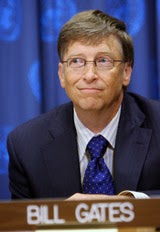Each time you click your mouse, you're paying homage to a UC Berkeley College of Engineering alumnus. Douglas Carl Engelbart, who received his Ph.D. in electrical engineering in 1955, not only invented the mouse but also helped define the way in which we interact with personal computers to this day—from multiple windows to hypertext links.
Born in 1925 on a farmstead near Portland, Oregon, Engelbart studied electrical engineering at Oregon State University and served in the Navy as a radar technician before completing his degree. While working at what is now NASA Ames, Engelbart experienced an epiphany driving to work.
According to his website, Engelbart envisioned "people sitting in front of cathode-ray-tube displays, 'flying around' in an information space where they could formulate and portray their concepts in ways that could better harness sensory, perceptual and cognitive capabilities heretofore gone untapped. Then they would communicate and communally organize their ideas with incredible speed and flexibility."
Engelbart brought his vision to UC Berkeley where one of the first general-purpose digital computers, the CalDiC, was under development. After completing his Ph.D. and a brief stint as an assistant professor in the College of Engineering, Engelbart took a position at the Stanford Research Institute. It was there that he wrote his seminal 1962 paper "Augmenting Human Intellect: A Conceptual Framework."
The first mouse was carved from wood and tracked motion via
two wheels mounted on the bottom instead of the ball employed in today's
models.
Photo courtesy Bootstrap Alliance
Photo courtesy Bootstrap Alliance
At his Augmentation Research Center, funded by the
Department of Defense's Advanced Research Projects Agency (now DARPA) Engelbart
and his talented team of researchers developed the technologies necessary to
realize their leader's vision. One of the myriad research projects included an
evaluation of various available "screen selection" devices, light
pens and their ilk, that would dovetail with new forms of networked computer
interaction. One approach Engelbert tossed into the mix was an idea for a
device he had batted around for several years. His trusted collaborator Bill
English built the first model out of wood and the team collectively began
calling it the "mouse" because of its resemblance to a rodent. As the
experiments continued, the mouse trounced the other devices in terms of
usability. (A knee-operated mouse didn't make the grade.)
In 1967, Engelbart's research lab became the second node on
the ARPANet, the predecessor to the Internet. This enabled the group to further
develop their On-Line System (NLS), the first collaborative and integrated
digital environment. The following year, at the Fall Joint Computer Conference
in San Francisco, Engelbart and his colleagues borrowed an early video
projector and operated their NLS via a homebrew modem and experimental
videoconference links to demonstrate their "augmentation framework."
The team's "mother of all demos" received a standing ovation and
introduced the world to the future of computing.
Today, Engelbart lives in the Silicon Valley where he
directs a technology think tank called the Bootstrap Alliance, dedicated to the
core idea that informed, and continues to permeate, all of his work:
"Purposefully investing in improving organizational
collective IQ through intelligent improvement strategies promises to yield
compound returns. In simple words, the better we get at our collective IQ, the
better we'd get at improving our collective IQ."





.jpg)









 to open the context menu for the button (if available).
to open the context menu for the button (if available). orCtrl +
orCtrl + 